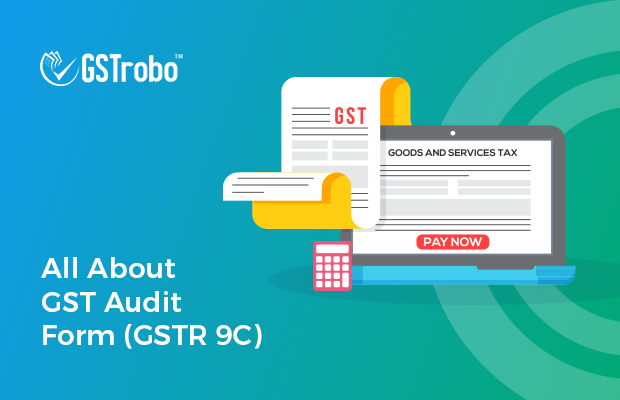All About GST Audit Form (GSTR 9C)
Before starting with the technicalities related to the GST Audit Form (GSTR 9C). We need to know what GST Audit Form is?

Under GST, GSTR 9C is an annual audit form that shall be furnished by the taxpayers whose annual aggregate turnover is 2 Crore INR or more. However, in addition to this GST Audit form, the taxpayer needs to file the reconciliation statement together with the audited copies of the financial statements. It shall be noted that the reconciliation statement shall be audited by the certified Chartered Accountant (CA) or Cost And Work Accountant (CWA).
| Important Update As per the recent 39th GST Council Meeting GST Council has decided to give relaxation to the MSMEs to file a statement of reconciliation in the GSTR-9C form for the Financial Year 2018-19 having an aggregate turnover of 5 Crore INR. Moreover, the due date for filing annual GST Return and reconciliation statement for the financial year 2018-19 has been extended till 30th June 2020” |
Applicability of GST Audit Form
| Turnover | GSTR-9 | GSTR-9C |
| Up to 2 Crore INR | Optional | Not Applicable |
| More than 2 Crore till 5 Crore INR. | Mandatory Filing | Optional (relaxation provided) |
| More than 5 Crore INR. | Mandatory Filing | Mandatory Filing |
Who needs to file GST Audit form?
Generally, every taxable person who has an aggregate turnover of 2 Crore INR or more needs to file GST Audit form (GSTR 9C). However, as per the recent GST Council meeting some relaxation has been given to the MSMEs.
What are the consequences of not filing GST Audit form (GSTR-9C)?
In case a taxpayer fails to file the GST Audit form within the due date then in such a case that taxable person needs to pay 200 INR per day as a penalty which includes 100 INR CGST and 100 INR SGST/UTGST. However, this amount of penalty cannot surpass the limit of 0.50% of the total aggregate turnover.
What are the different ways to file GST Audit Form (GSTR 9C)?
There are 2 ways using which a taxpayer can furnish GST Audit form and they are:
(i) Online; and,
(ii) Offline utility
Points to Remember
(i) Any taxpayer whose turnover exceeds the prescribed limit is required to file GSTR-9C and shall get their accounts audited by the certified CA or CWA.
(ii) GST Audit form shall be digitally signed by the certified auditor and must consist of all the discrepancies and additional liabilities.
(iii ) Company Secretary (CS) needs to certify all the additional liabilities that are arising due to the reconciliation process and audit.
The Bottom Line
At last, we can conclude that the GST audit form is the only measuring yardstick that helps the GST authorities to verify the authenticity of GST Returns filed by the taxpayer during a particular financial year.
FAQs
Q1. What items are included at the time of calculating aggregate turnover?
Here is a list of items that are included at the time of calculating aggregate turnover:
i. All taxable supplies.
ii. Supplies attracting reverse charges.
iii. Any supply made by the job worker on behalf of the principal.
iv. Supplies that are made between two business verticals.
v. Exports
vi. Zero-rated and exempt supplies.
vii. All other taxes that are not covered under the scope of GST. For instance, entry tax, entertainment tax, and so forth.
Q2. What items are not included at the time of calculating aggregate turnover?
Here is a list of items that are not included at the time of calculating aggregate turnover:
i. All the purchases against which tax is paid under reverse charge.
ii. Goods supplied or received by the job worker.
iii. Activities that fall under the Schedule III of the CGST Act.
